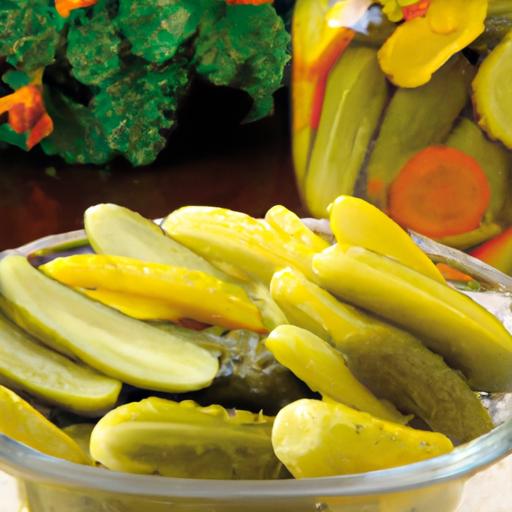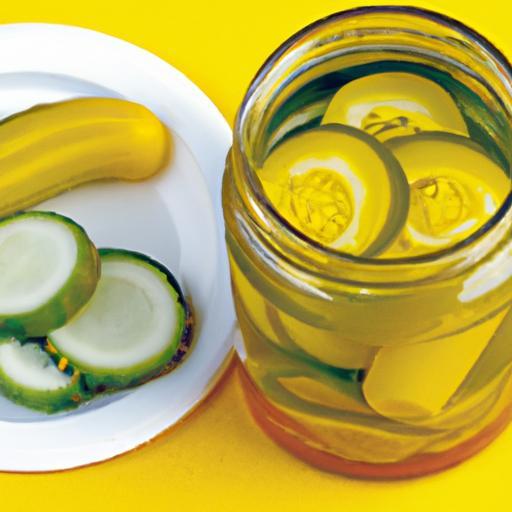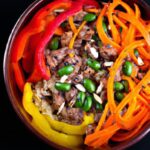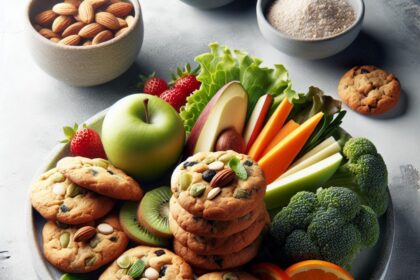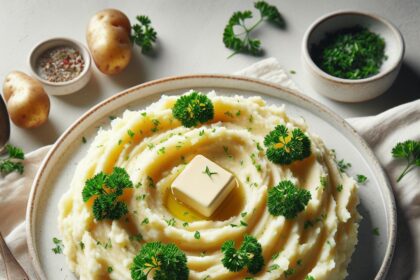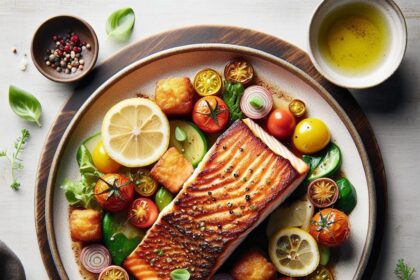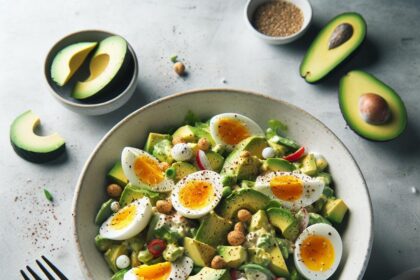There’s something undeniably magical about the humble pickle-a burst of tangy brightness that can elevate a simple snack or transform an ordinary meal into a flavor fiesta. In the world of vibrant veggies and zesty brines, the art of pickling stands as a timeless tradition, blending creativity with preservation. Welcome to “Pickle Perfect: Creative Veggie Prep Tips for Tangy Treats,” where we dive into the colorful realm of pickling to unlock fresh ideas, expert techniques, and inspired flavor combinations. Whether you’re a seasoned pro or a curious beginner, this guide will turn your kitchen into a tangy playground, making every veggie a crunchy, lip-smacking masterpiece. Let’s get pickling!
Mastering the Art of Brine Balance for Ultimate Flavor Infusion
Pickle Perfect: Creative Veggie Prep Tips for Tangy Treats start with understanding the delicate balance of a brine. The symphony of saltiness, acidity, and a whisper of sweetness is what breathes life into every crunch and zest-filled bite. Crafting the perfect brine isn’t just science-it’s an art form that lets your veggies soak in an explosion of tangy goodness while keeping them crisp and vibrant.
Begin with a base that combines vinegar (white or apple cider are classics) and water, then layer in salt and a bit of sugar. The salt draws moisture from the veggies, while the acidity preserves them and enhances flavor. Experimenting with these ratios will help you achieve that unbeatable depth that defines bold, unforgettable pickles.
Choosing the Best Veggies for Crunch and Zest
Opting for the right vegetables is key to perfecting your pickles. Think of carrots, cucumbers, radishes, green beans, and even unusual suspects like fennel or kohlrabi for diverse textures and flavors. Firm veggies with high water content naturally lend themselves to a satisfying snap after pickling. Smaller, evenly sized pieces also absorb the brine uniformly, ensuring that every bite bursts with tang.
For zest, consider tossing in peppercorns or mustard seeds directly in your jar. They add those tiny pops of spice that marry beautifully with the veggies’ inherent sweetness. Pairing bold veggies with a vibrant brine makes each pickle a stunner on your plate.
Innovative Seasoning Blends to Elevate Your Pickles
Moving beyond classic dill and garlic, you can innovate by blending spices that dance on your palate. Here are a few inspiring mixes to try:
- Smoky & Sweet: Smoked paprika, cinnamon sticks, and clove for a warm, unexpected twist.
- Asian-Inspired: Star anise, ginger slices, and Szechuan peppercorns create a bold, numbing heat.
- Herbaceous & Fresh: Fresh thyme, rosemary sprigs, and lemon zest bring bright, garden-fresh notes.
Adding these blends to your brine infuses layers of complex flavor while keeping the pickles fresh and lively.
Pro Tips for Perfect Texture and Long-Lasting Freshness
Maintaining that coveted crunch and fresh flavor comes down to timing, temperature, and storage. First, always blanch tougher veggies like green beans or carrots briefly in boiling water to soften their fibers subtly but keep the crunch. Then, plunge them quickly into an ice bath before packing jars.
Use non-iodized salt such as kosher or pickling salt to avoid cloudiness and preserve clean brine flavor. Store your pickles in the fridge or a cool, dark pantry to maintain texture over weeks. For longer storage, consider water bath canning with proper sterilization.
Lastly, give your jars a gentle shake every day for the first week to evenly distribute flavors-your tangy treat will only intensify with patience.
Prep and Cook Time
- Preparation: 20 minutes
- Pickling Time: Minimum 48 hours (best after 5 days)
Yield
Approximately 4 pint-sized jars of vibrant pickles
Difficulty Level
Easy to Medium – ideal for beginners and seasoned pickle pros alike
Ingredients
- 4 cups mixed fresh vegetables (e.g., cucumbers, carrots, radishes, green beans)
- 2 cups distilled white vinegar
- 2 cups water
- 3 tablespoons kosher salt (non-iodized)
- 2 tablespoons granulated sugar
- 1 tablespoon black peppercorns
- 2 cloves garlic, peeled and smashed
- 1 teaspoon mustard seeds
- Optional: fresh dill sprigs, sliced ginger, or 1 cinnamon stick for innovative flavor blends
Instructions
- Prepare the veggies: Wash and trim your vegetables. Cut them into uniform sticks or slices to ensure even pickling.
- Blanch (if needed): For firmer veggies like carrots or green beans, blanch in boiling water for 2 minutes, then immediately submerge in ice water to stop cooking.
- Make the brine: In a saucepan, combine vinegar, water, salt, and sugar. Bring to a gentle boil, stirring to dissolve salt and sugar completely. Remove from heat.
- Pack jars: Place garlic, peppercorns, mustard seeds, and any optional herbs or spices into sterilized jars. Stuff the jars tightly with your prepared veggies.
- Pour brine: Carefully pour the hot brine over the veggies, leaving about ½-inch headspace. Use a clean utensil to release any trapped air bubbles.
- Seal and cool: Cap jars tightly and allow them to cool to room temperature. Then refrigerate for at least 48 hours before tasting.
- Shake and wait: For best flavor, gently shake jars each day during the first week. Your pickles will hit peak tang and crunch after about 5 days.
Chef’s Notes
- For low-sodium versions, reduce the salt but never omit it entirely-it’s crucial for preservation and texture.
- Experiment with seasonal vegetables to keep your pickles exciting throughout the year.
- Use sterilized glass jars to avoid contamination and extend shelf life.
- Want fizz? Try fermenting your pickles naturally with less vinegar and more salt for probiotic-rich results.
- Pickles will keep refrigerated fresh for up to 2 months-always check for off smells or mold before consumption.
Serving Suggestions
Serve your vibrant, crunchy pickles as a zesty accompaniment to rich sandwiches or grilled meats. They add a refreshing acidity as a side to creamy dips and cheese boards. Garnish each jar or platter with fresh herbs like dill or cilantro for a visually enticing finish. For a cool, creative twist, chop your pickles to mix into salads, or blend them into tangy sauces and relishes.
| Nutrient | Per Serving (1 jar) |
|---|---|
| Calories | 25 |
| Protein | 1g |
| Carbohydrates | 5g |
| Fat | 0g |
For more inspiration on creative vegetable preparations, check out our creative vegetable recipes. For science-backed guidance on fermentation and pickling, visit USDA National Institute of Food and Agriculture.

Q&A
Q&A: Pickle Perfect – Creative Veggie Prep Tips for Tangy Treats
Q1: What makes pickling veggies such a fantastic way to prepare them?
A1: Pickling transforms ordinary vegetables into vibrant, tangy treasures! It not only preserves the crunch and color but also infuses them with a zesty flavor profile that brightens up any dish. Plus, pickled veggies are versatile-great for snacking, topping sandwiches, or jazzing up salads.
Q2: Which vegetables are the best candidates for pickling?
A2: While cucumbers are the classic pickling star, the veggie lineup is vast and exciting! Carrots, green beans, radishes, cauliflower, beets, and even asparagus all soak up the tangy brine beautifully. The key is choosing fresh, crisp vegetables that can hold their texture through the marinating magic.
Q3: How can I add creative flair to my pickle brine?
A3: Dare to play with herbs, spices, and unexpected ingredients! Try tossing in garlic cloves, dill sprigs, mustard seeds, peppercorns, or red chili flakes for heat. For a sweeter twist, add a splash of honey or apple cider vinegar. Experimenting with citrus peels or star anise can elevate your pickles to gourmet territory.
Q4: What’s the secret to keeping pickled veggies perfectly crunchy?
A4: A little bit of science and a pinch of patience! Adding pickling salt helps maintain that satisfying snap. Also, soaking veggies in ice water before pickling can enhance their crispness. Finally, avoid over-processing-quick pickles that marinate for a day or two often retain crunch better than long-fermented ones.
Q5: Can I pickle veggies without vinegar?
A5: Absolutely! Lactobacillus fermentation is the answer. Submerge veggies in a salty water brine and let nature do its work at room temperature for several days. This method creates naturally tangy, probiotic-rich pickles with a complex flavor that’s both tangy and slightly fizzy-a delightful alternative to vinegar pickling.
Q6: How do I incorporate pickled veggies into meals creatively?
A6: Think beyond the pickle jar! Add chopped pickled carrots or radishes to grain bowls for a tangy crunch. Layer pickled green beans as a bright topping on burgers or tacos. Use pickled cauliflower florets to punctuate a cheese board, or stir shredded pickled beets into salads for color and zing. The tanginess will awaken your taste buds and uplift your usual meals.
Q7: What’s an easy beginner-friendly pickle recipe to try at home?
A7: Start simple with quick pickled cucumbers! Slice cucumbers thinly, pack them into a jar with garlic and dill, then pour over a brine of equal parts white vinegar and water, plus a tablespoon of sugar and salt. Let them sit in the fridge overnight, and you’ll have tangy, crisp pickles ready to enjoy in just 24 hours.
With these tips in your culinary toolkit, your veggie prep will never be dull. Embrace the tang, the crunch, and the endless creative possibilities that pickling brings to your kitchen!
The Way Forward
As the brine settles and your veggies soak up those zesty flavors, remember that pickling is more than preservation-it’s a playful art form that transforms humble ingredients into tangy treasures. From crisp cucumbers to vibrant carrots, each jar holds a burst of creativity waiting to brighten your meals and spark your culinary curiosity. So grab your favorite veggies, experiment with spices, and let your kitchen become a tangy playground where every bite tells a story. Happy pickling, and here’s to savoring the perfect pickle-one crunchy, flavorful bite at a time!